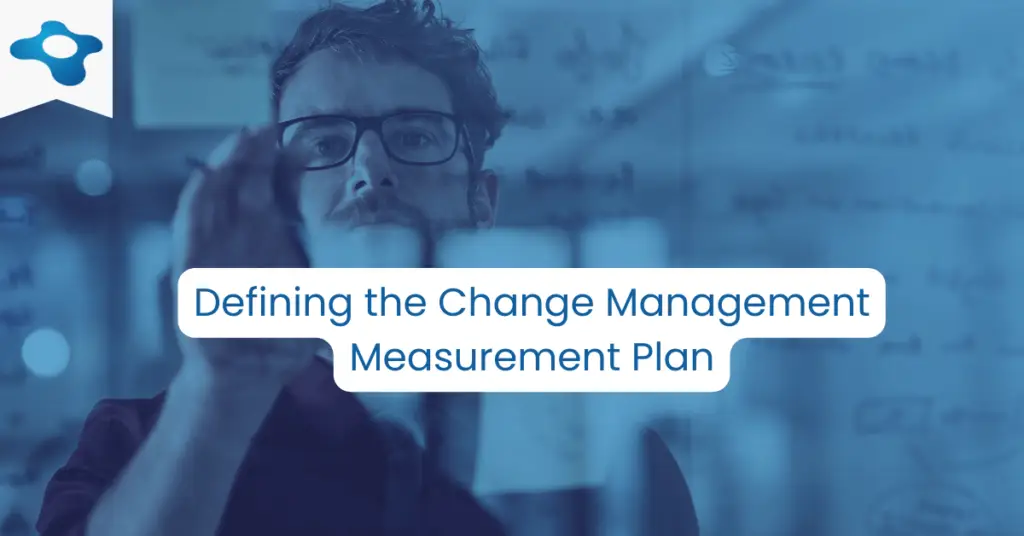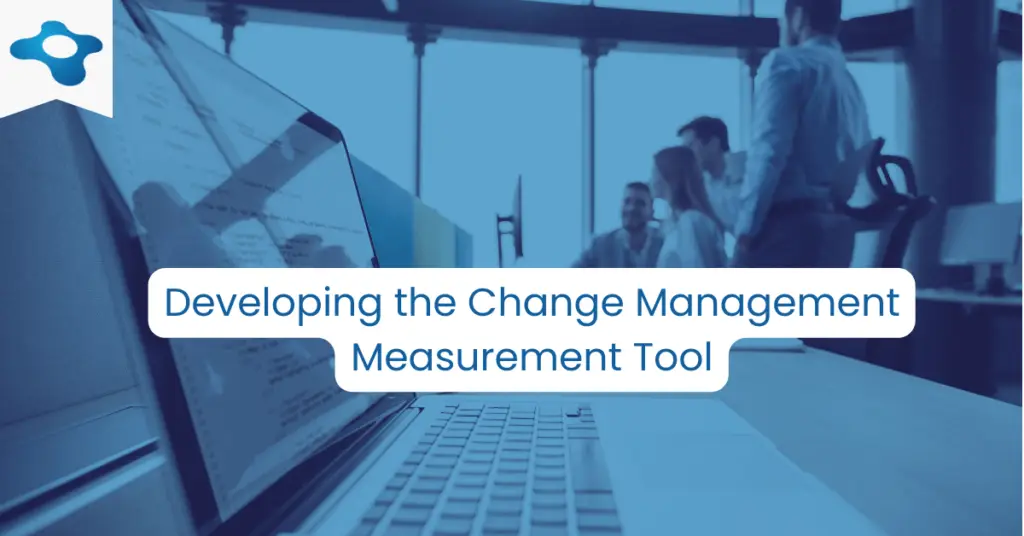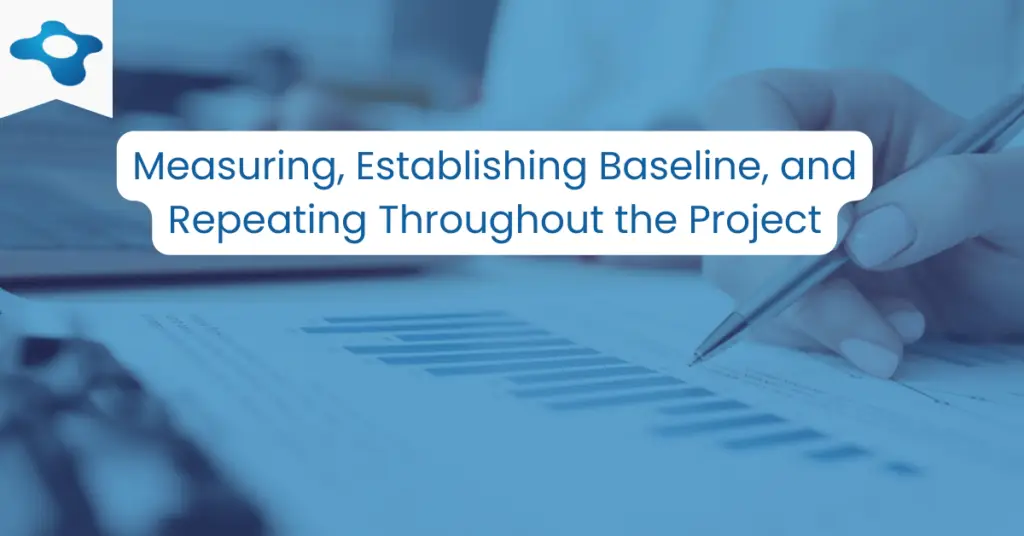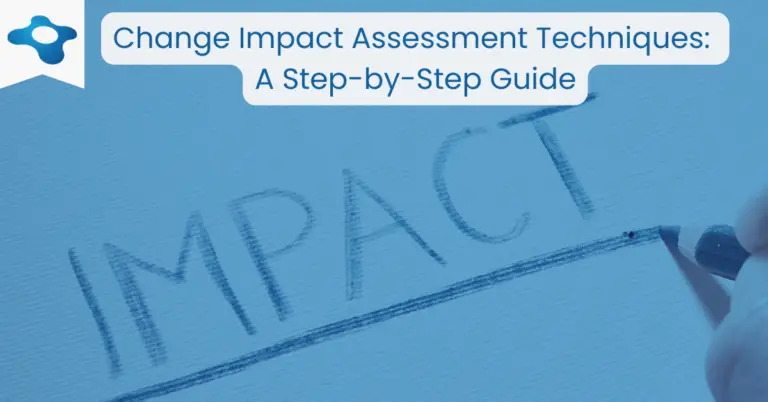Key Takeaways
- Establishing a solid change management measurement plan is crucial for monitoring the progress and success of change initiatives, ensuring alignment with organizational objectives.
- Employ a variety of measurement tools and methods, such as surveys, interviews, and focus groups, to gather comprehensive and accurate data on change impact.
- Continuous measurement and analysis empower organizations to identify trends, implement corrective action, and refine the change management process for ongoing improvement.
In today’s dynamic business environment, the ability to adapt and evolve is crucial for organizations’ success. A key aspect of this adaptability is the change management process, which encompasses the planning, implementation, and tracking of organizational transformations. An often overlooked, yet vital component of this process is change measurement, which involves selecting and tracking the right key performance indicators (KPIs) and metrics to gauge the success of change initiatives.
Change measurement is essential for understanding the progress and effectiveness of change initiatives, as it provides valuable insights that inform decision-making and help drive continuous improvement. By carefully selecting and monitoring relevant KPIs and metrics, organizations can identify areas of success and areas that may require adjustments or additional support.
This article will delve into the process of selecting the appropriate KPIs and metrics for measuring the success of change initiatives, from defining the change measurement plan to developing the right tools for data collection and analysis. We will also discuss the benefits of effective change measurement and the risks associated with neglecting this crucial aspect of the change management process.
Defining the Change Management Measurement Plan

The first step in the change measurement process is to define a comprehensive change measurement plan. This plan serves as a roadmap for measuring the success of change initiatives and provides a structured approach for data collection and analysis.
1. Setting clear objectives for change measurement
Begin by outlining the specific objectives of your change measurement efforts.
These objectives should be closely aligned with the overall goals of the change management process, and they may include understanding stakeholder perceptions, tracking progress toward desired outcomes, or identifying areas for improvement.
2. Identifying the measurement method
Next, choose the most appropriate method(s) for collecting data.
Common measurement methods include surveys, structured interviews, and focus groups. The choice of method will depend on factors such as the nature of the change, the target population, and the level of detail required in the data.
3. Determining the target population and time-line for measurement
Clearly define the target population you will measure. This population may include specific departments, teams, or individuals affected by the change. Additionally, establish a time-line for measurement activities, ensuring that data collection occurs at appropriate intervals throughout the change initiative.
This allows for a more accurate assessment of progress and provides opportunities for timely adjustments.
4. Establishing roles and responsibilities
Assign clear roles and responsibilities for administering the change measurement plan. This includes determining who will be responsible for data collection, analysis, and reporting. By establishing a well-defined structure, you will ensure that the change measurement process runs smoothly and effectively.
Throughout this process, consider leveraging existing change management tools and templates to streamline the planning and execution of your change measurement plan.
By adopting a methodical approach, you can enhance the success of your change initiatives and better position your organization for future growth and adaptation.
Developing the Change Management Measurement Tool

To effectively track the progress of change initiatives, it is crucial to develop a reliable and accurate change measurement tool. This section will provide an overview of different measurement approaches, guidance on creating self-made tools, and the role of third-party tools and services in change measurement.
1. Overview of different measurement approaches
Various approaches can be employed to gather data and insights about change initiatives. Some common methods include:
- Surveys – questionnaires designed to gather quantitative and qualitative data from a large number of respondents
- Structured interviews – one-on-one conversations following a predetermined set of questions to collect in-depth insights
- Focus groups – small group discussions led by a moderator to explore participants’ opinions, experiences, and perceptions
Each of these methods has its strengths and weaknesses, and the choice will depend on the context, objectives, and resources available.
2. Guidance on creating self-made surveys, structured interviews and focus groups
When developing your own change measurement tools, consider the following tips:
- Surveys – Keep questions clear, concise, and relevant to the change initiative. Use a mix of open-ended and closed-ended questions to capture both quantitative and qualitative data. Ensure that the survey is easy to navigate and understand.
- Structured interviews – Prepare a list of targeted questions that align with the change measurement objectives. Use open-ended questions to encourage detailed responses and follow-up questions to delve deeper into specific topics.
- Focus groups – Select participants who represent the target population, and develop a discussion guide with open-ended questions that facilitate conversation. Ensure that the moderator is skilled in guiding the discussion and capturing valuable insights.
3. The role of third-party tools and services in change measurement
Third-party vendors may offer tools and services that can aid in the change measurement process. These providers often have specialized expertise in data collection, analysis, and reporting, which can save time and resources. When considering third-party options, evaluate their track record, features, and compatibility with your organization’s needs and objectives.
By developing a robust change measurement tool, you can gather the data needed to assess the effectiveness of your change management process and make data-driven decisions that enhance the success of your change initiatives.
Remember to leverage change management models and methodologies to support your measurement efforts and promote best practices across your organization.
Measuring, Establishing Baseline, and Repeating Throughout the Project
An essential aspect of the change management process is the ongoing measurement and tracking of key performance indicators (KPIs) and metrics. In this section, we’ll discuss the importance of regular measurement, adjusting the baseline, and analyzing data to identify trends.

1. Importance of ongoing measurement and tracking
Continuous measurement enables organizations to monitor the progress of change initiatives, detect issues, and take corrective action when necessary.
By regularly gathering data, organizations can make informed decisions and adapt their strategies as needed, ensuring the most effective use of resources and increased chances of success.
2. Adjusting the baseline as the project progresses
As change initiatives evolve, it’s important to adjust the baseline to reflect new information and shifting objectives. This allows for a more accurate assessment of progress and helps identify areas that may require additional attention.
Regularly reviewing and updating the baseline also promotes transparency and ensures that stakeholders have a clear understanding of the project’s current status.
3. Analyzing data and identifying trends
Data collected through the change measurement tool should be analyzed to identify trends, patterns, and insights. This analysis can help organizations recognize areas where the change initiative is succeeding and areas that may require improvement. Furthermore, understanding these trends enables organizations to refine their change management strategies, leading to more effective implementation and adoption of change initiatives.
By regularly measuring, establishing baselines, and repeating the process throughout the project, organizations can ensure they stay on track and proactively address any issues that arise.
Applying change management best practices and leveraging change management tools and templates will further support these efforts, ultimately driving successful change within the organization.
Identifying Actions to the Support Change Management Effort
A key component of the change management process is identifying actions that support the change effort based on the data collected through measurement.

This section will discuss the importance of data analysis in decision-making, taking corrective action, and regularly reviewing and refining the change measurement process.
1. Analyzing measurement data to inform decision-making
Data collected through the change measurement tool provides valuable insights into the progress of change initiatives. Analyzing this data allows organizations to make informed decisions about resource allocation, strategic adjustments, and other factors crucial to the success of the change effort.
This process ensures that the organization is equipped to address any challenges and capitalize on opportunities as they arise.
2. Taking corrective action based on measurement results
When measurement data reveals areas that require improvement or attention, organizations should take corrective action to address these issues. This may involve adjusting strategies, reallocating resources, or providing additional support to stakeholders.
Promptly taking corrective action helps minimize transition risks and supports the overall success of the change initiative.
3. Regularly reviewing and refining the change measurement process
As the change initiative progresses, it’s essential to regularly review and refine the change measurement process to ensure its continued effectiveness. This involves evaluating the relevance of the KPIs and metrics being tracked, as well as the methods used for data collection and analysis. In doing so, organizations can ensure they are gathering the most accurate and useful data to inform decision-making and drive successful change.
Applying change management best practices and utilizing change management tools and templates will support organizations in identifying and implementing actions to support their change efforts.
By doing so, they can increase the likelihood of successful change adoption and realize the full potential of their change initiatives.
Change Management Measurement: Benefits if Used
Implementing a robust change measurement plan as part of the change management process offers numerous benefits to organizations.
This section will explore how effective change measurement provides crucial management information, supports a best practice approach, and facilitates benchmarking and comparison of change initiatives.

1. Providing key management information about the change program progress
Effective change measurement delivers essential data that informs management about the progress of change initiatives. This data helps identify areas of success, potential risks, and areas that require attention or adjustment.
Armed with this information, organizations can make well-informed decisions and take necessary actions to ensure the successful realization of their change goals.
2. Supporting a best practice approach to change management
Adhering to change management best practices is crucial for the success of any change initiative.
By implementing a thorough change measurement plan, organizations demonstrate their commitment to best practices, which can enhance stakeholder confidence and improve the chances of successful change adoption.
3. Facilitating benchmarking and comparison of change initiatives
Effective change measurement allows organizations to compare and benchmark their change initiatives against past and future programs. This process helps identify trends, areas of improvement, and best practices that can be applied to future change efforts.
By learning from past experiences and applying these insights, organizations can optimize their change management process and increase the likelihood of success for future initiatives.
Change Management Measurement: Risks if Ignored
Neglecting the importance of change measurement in the change management process can lead to several risks and potential setbacks for organizations. This section highlights the risks associated with inadequate change measurement.

1. Lack of quantified data measuring change progress
When change measurement is ignored, organizations lack the necessary data to accurately assess the progress of their change initiatives.
This deficiency makes it difficult to make informed decisions and adjustments, potentially leading to failed change efforts.
2. Management missing key risk mechanisms
Without a proper change measurement plan, management may miss crucial risk indicators that could jeopardize the success of the change initiative.
Early identification of potential risks is essential for taking preventive action and ensuring the successful adoption of change.
3. Corrective action may be too little, too late
When change measurement is not prioritized, organizations risk-taking corrective actions that are insufficient or implemented too late in the change process. This can result in wasted resources, lower stakeholder buy-in, and ultimately, an unsuccessful change initiative.
By embracing a robust change management process, organizations can mitigate these risks and improve their chances of successful change implementation.
/spa
Selecting and tracking the right KPIs and metrics are vital components of a successful change management process. Proper change measurement helps organizations stay on track, make informed decisions, and adapt to evolving circumstances throughout the change initiative. By implementing effective change measurement practices, organizations can reap the benefits of well-executed change efforts, including improved risk management, better decision-making, and streamlined transitions.
As we have discussed, the advantages of a robust change measurement approach cannot be overstated. Embracing this approach can mean the difference between a change initiative that flourishes and one that falters.
Therefore, we encourage our readers to make change measurement a priority within their organizations and to leverage change management tools and templates, models and methodologies, and best practices for a successful change management process.


